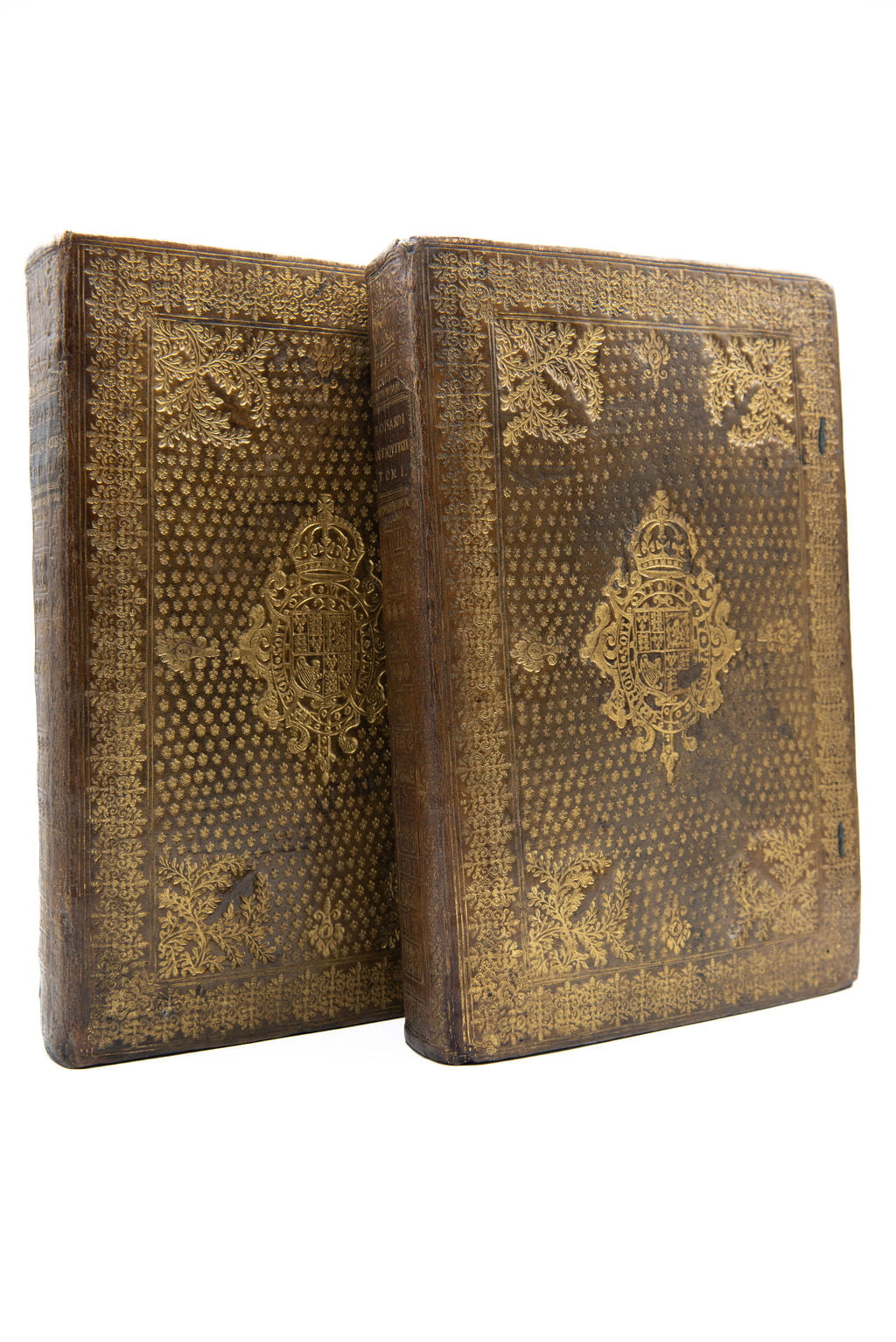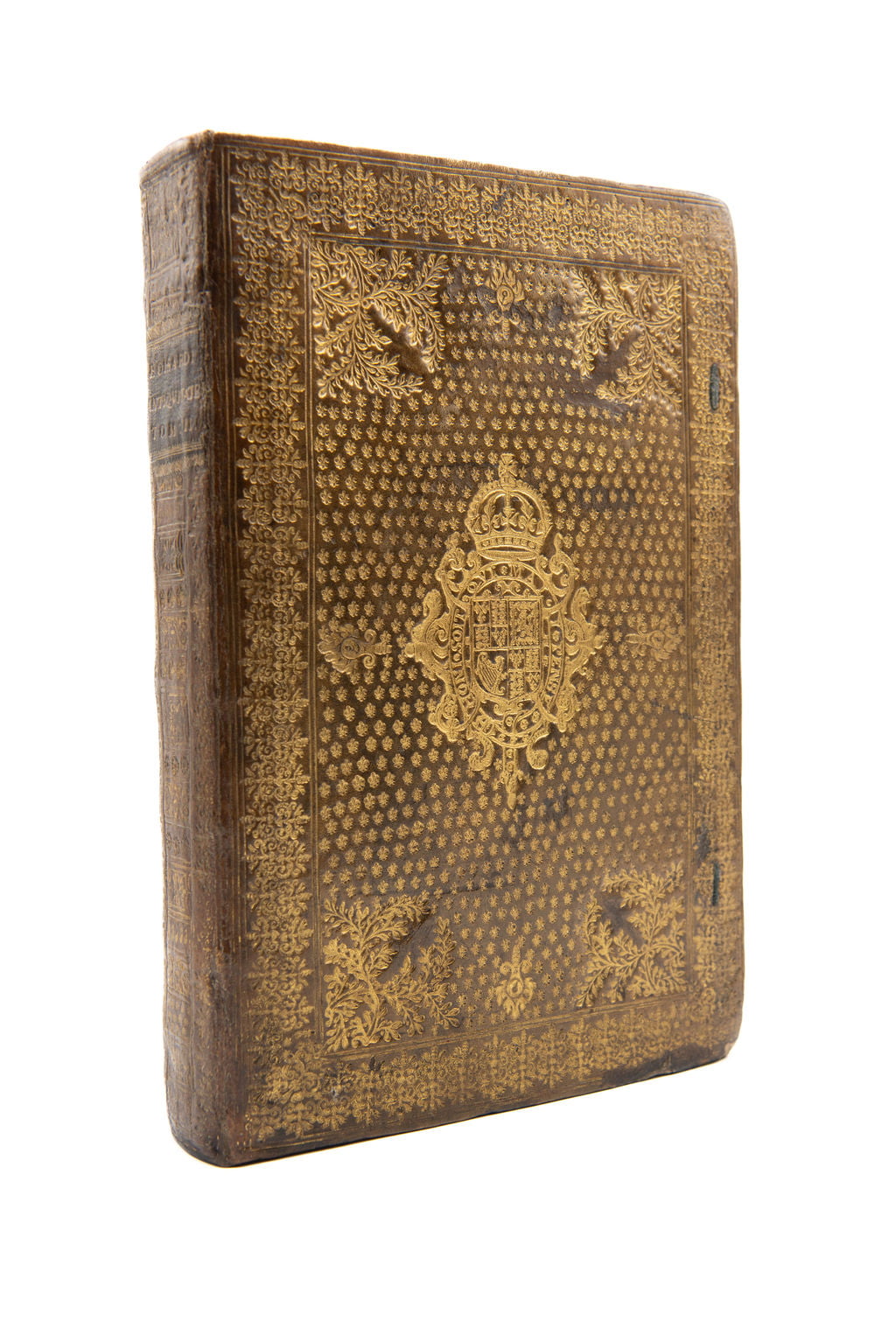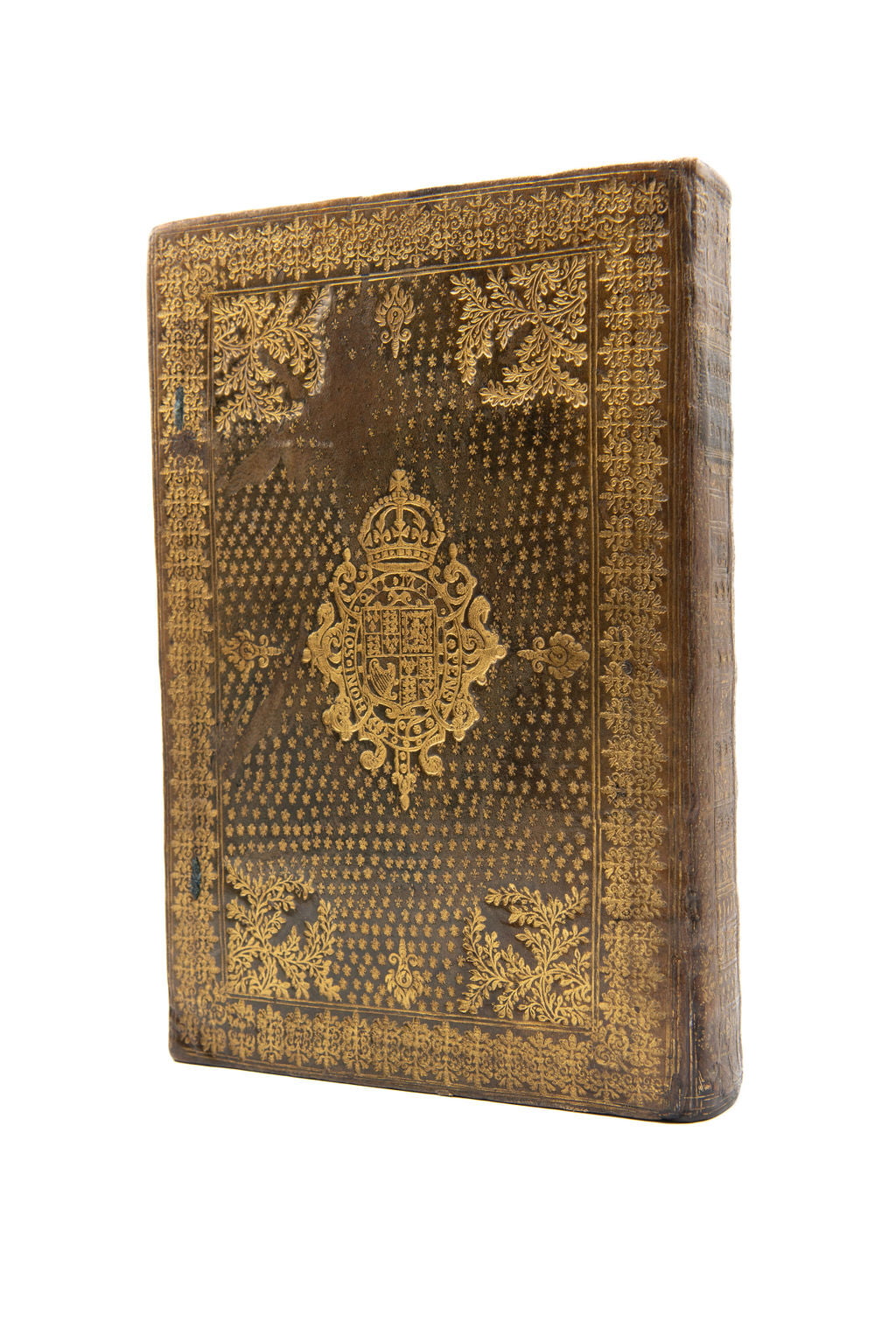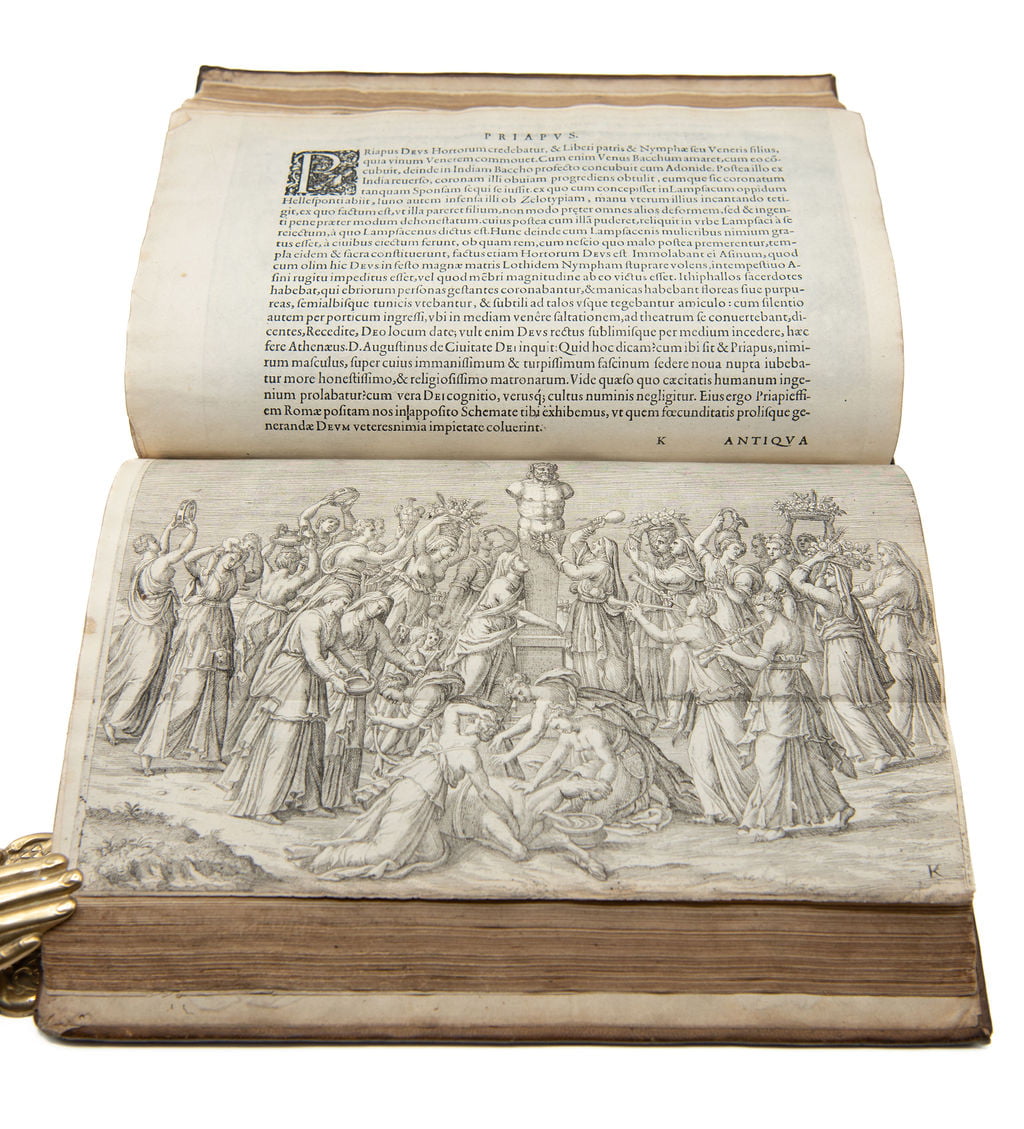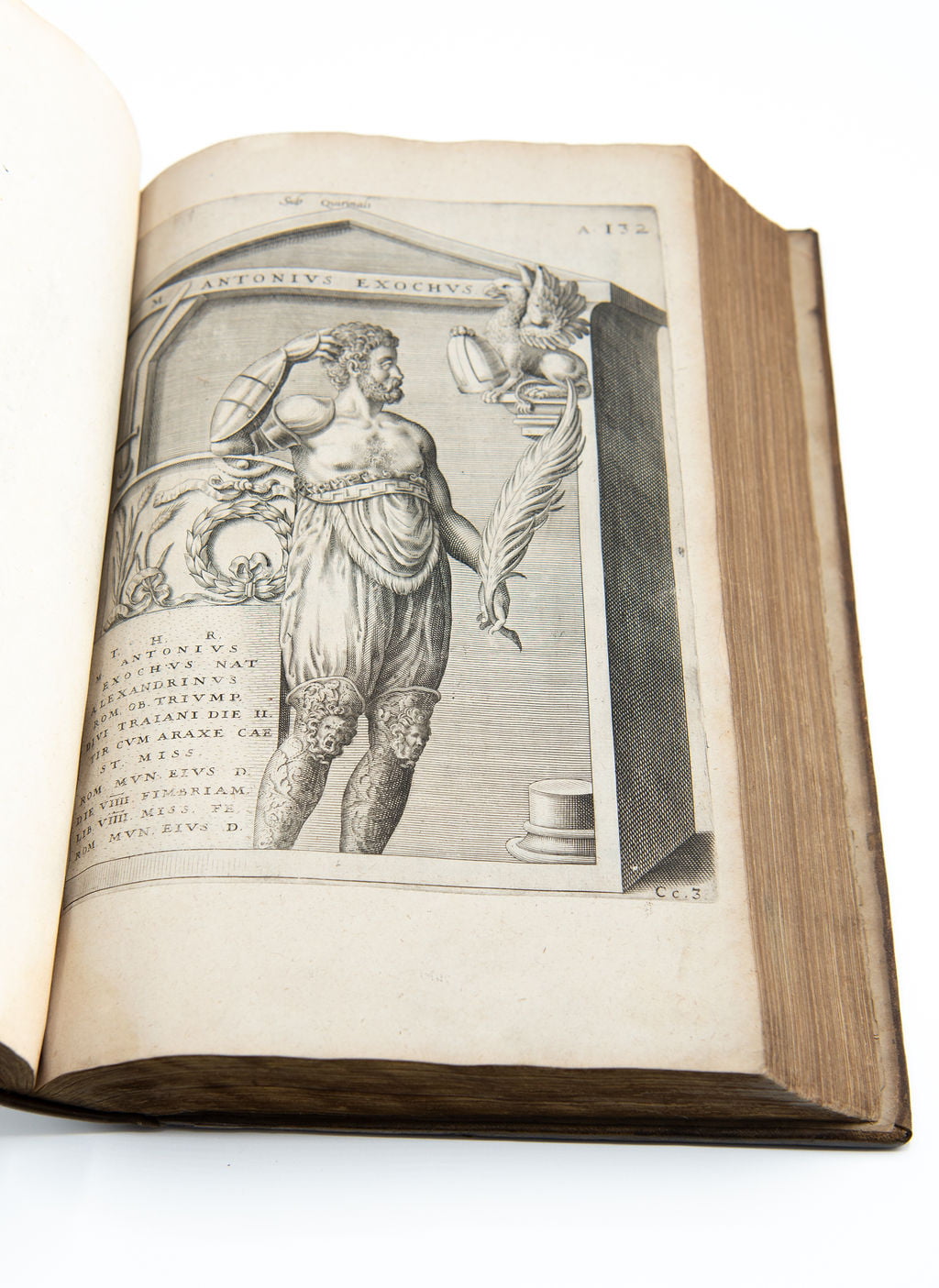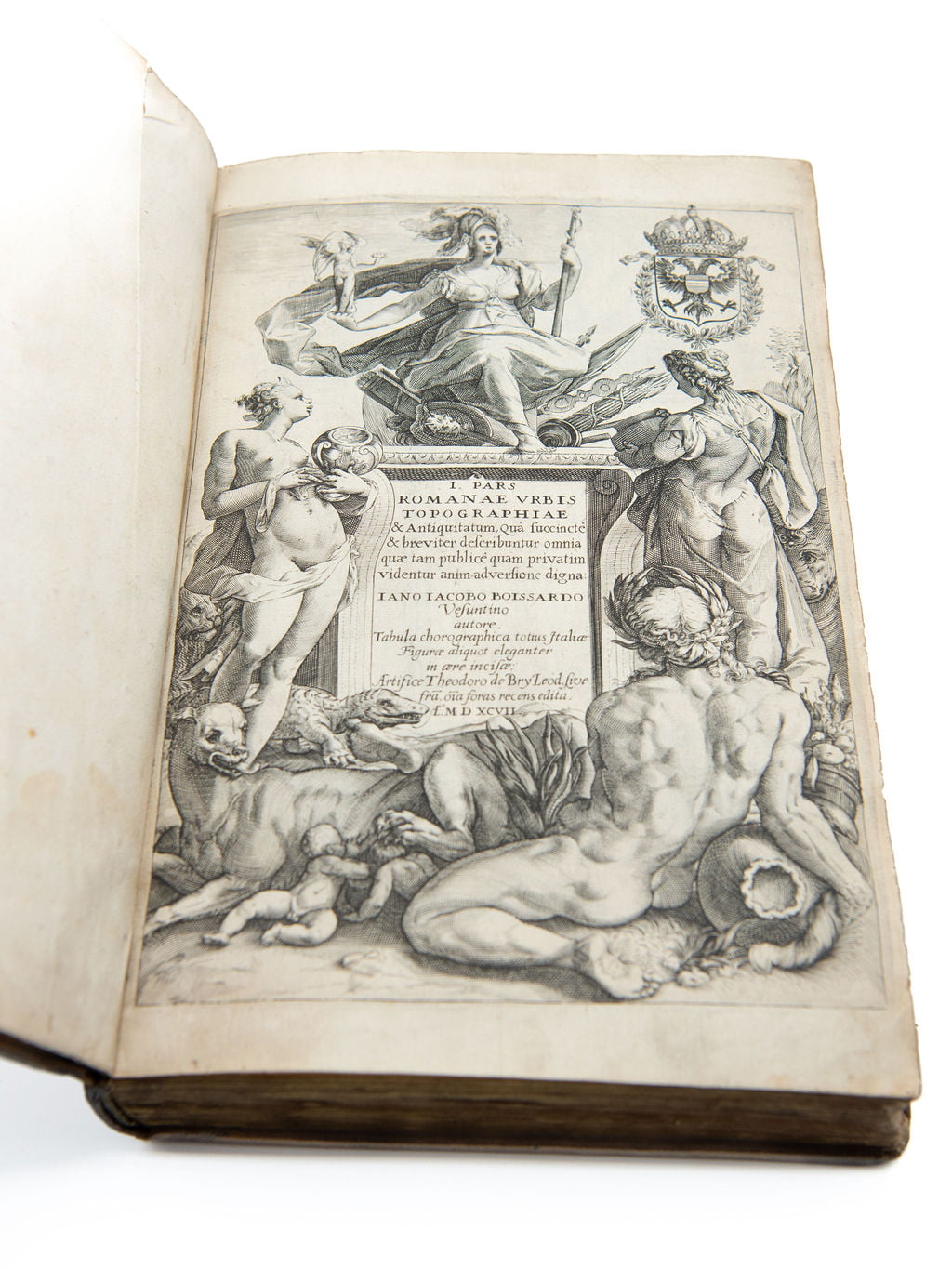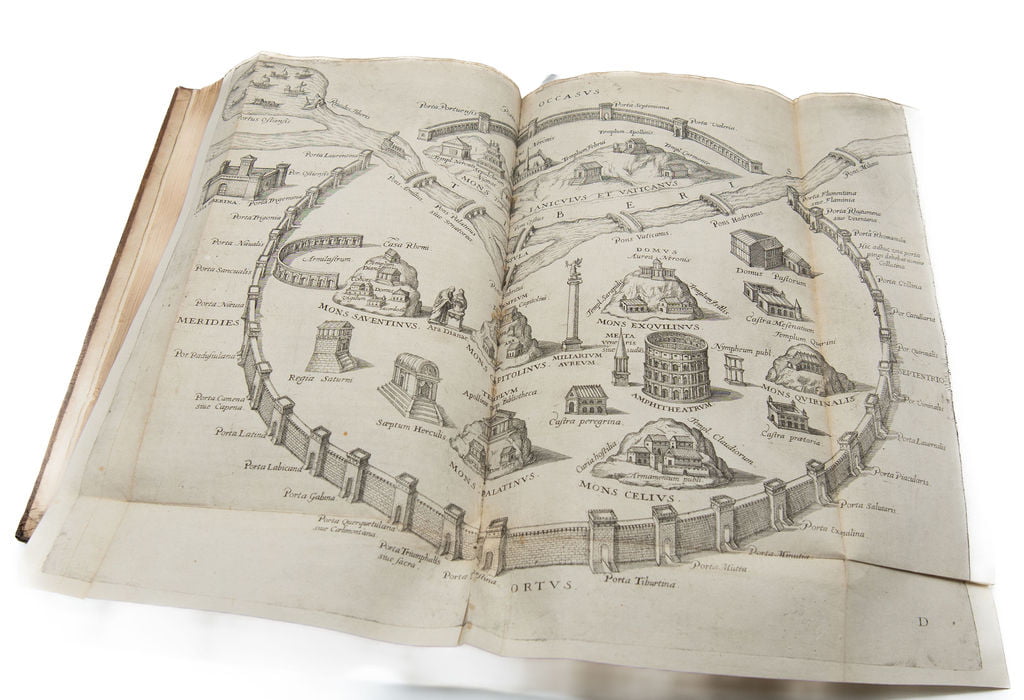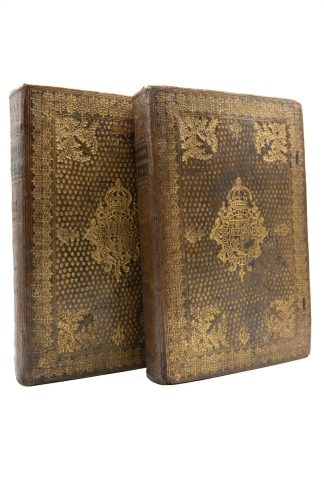BOISSARD, Jean-Jacques
BOUND BY BATEMAN FOR JAMES I
Romanae Urbis topographiae et antiquitatum
Frankfurt, Theodor de Bry, 1597-[1602]£25,000.00
FIRST EDITION. Large 4to, 6 parts in 2 vols: 1): pp. [16], 163, [3]; 2): pp. [6], 1-18, 55-211, 11, [2], plus 39 plates with related text; 3): pp. [22], 42, plus 108 plates numbered 43-150; 4): pp. [4], 52, plus 97 plates numbered [53]-149; 5): pp. [20], plus 130 plates numbered 1-129; 6): pp. [8], 47, [1], plus 146 numbered plates. Roman letter, little Italic; 6 engraved architectural and/or allegorical titles, initial engraved portraits of Boissard and of Theodor de Bry repeated in parts 1-4, 21 engraved maps and city plans including 6 folding plates, numerous engraved plates of mainly Roman sculpture and inscriptions, several after Jacques Granthomme; numerous initials, mainly historiated, and head- and tail-pieces, mostly decorative; a few leaves and plates lightly age browned, light dampstain to lower gutter of central gatherings in both vols, plate 13 of part 2 pasted in over blank, plate 59 in part 4 from another copy, minor repair to the blank margins of a few plates and two folding maps; in vol. 1, occasional tiny, mainly marginal rustspots, lightly affecting plate 132 of part 3; in vol. 2, one or two tiny wormhole to blank outer lower corner of final plates, minor rubbing on plate 28 of part 5, small waterstain along blank upper margin of a few central gatherings. A fine copy in contemporary goldtooled brown goatskin, gilt wide double-fillet dentelle border and large central panel with olive wreath at corners, torches at each side and arms of King James I at centre on semis of fleurs-de-lys; flat spine with original morocco title labels and series of decorative floral compartments within double-fillet dentelle border, a. e. g.; extremities a little rubbed, light cracks to joints, semis on rear cover of vol. 2 slightly scuffed; early ms shelfmarks and bookplate of Robert S. Pirie and William Foyle on front pastedown of both vols.
First edition, with part 5 in its most complete variant, of one of the most beautifully illustrated surveys of Roman antiquities. Jean-Jacques Boissard (1528-1602) was a French Neo-Latin poet and prominent antiquarian. He had an adventurous life, fleeing from the seminary where we was training, travelling throughout Germany, Italy and Greece and eventually embracing Protestantism. A passionate collector of antiquities despite his little financial means, he compiled a detailed account of his numerous visits to archaeological sites and private houses. The Romanae Urbis topographia was his most successful work, largely because of the refined plates engraved by Theodor de Bry (1528-1598 ), the renowned artist responsible, i. a., for a series of illustrations of early expeditions to the Americas and Asia. Bry’s engraved self-portrait appears here at the beginning of the first four parts along with Boissard’s. The extraordinary set of illustrations mainly pertains to the Roman antiquities which were scattered in every corner of the Eternal City at the end of the sixteenth century. The book, published in six parts between 1597 and 1602, also provides important evidence of contemporary art collecting in Rome, presenting pieces owned by Pope Julius III, Angelo Colocci and the cardinals Carpi, Farnese, Salviati and Cesi. In part 6, one can find antiquities from Egypt and Greece, while the magnificent engraved title in part 4, with a skeleton popping up out of a sarcophagus and showing an hourglass to a kneeling cardinal, is an effective memento mori.
This marvellous copy comes from the library of James I (1566-1625), the first and probably the most learned ‘King of Great Britain’ as ruler of both Scotland and England. ‘He studied Greek, French, and Latin and made good use of a library of classical and religious writings that his tutors, George Buchanan and Peter Young, assembled for him. James’s education aroused in him literary ambitions rarely found in princes but which also tended to make him a pedant.’ EBO. His numerous books were often customised with his arms by the royal binder, John Bateman, who employed various style, material and techniques (M. Foot, The Henry Davids Gift, I, pp. 38-49, 52). These two volumes, however, appears to be exceptional even within Bateman’s refined and wide-ranging output.
BM STC Ger., 136; Adams B 2331-2332, 2336, 2338-2339, 2343; Brunet, I, 1069; Graesse, I, 475 (‘rarament complete’); Cicognara, 3626; Rossetti, G 515; Schudt, 715; VD16 B 6461 plus VD17 23:265861T.In stock


